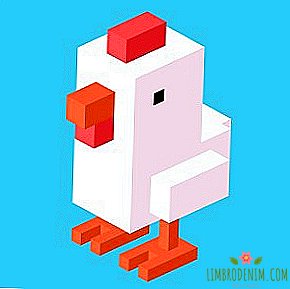Babaduk and all-all-all: Characters who suddenly became gay icons

alexander savina
June is traditionally considered the month of the LGBT community.: In June 1969, the famous Stonewall Uprising began - one of the most important events in the history of the struggle for LGBT rights. This year, one of the symbols of the pride was suddenly Babaduk, the character of the horror film of the same name in 2014: he could be seen at gay parades in different cities. We have collected some more pop cultural characters who unexpectedly became gay icons: from Dorothy by Judy Garland to He-Men. Alas, among LGBT characters in pop culture, men predominate and are sorely lacking in other role models: lesbians, bisexuals and transgender people - but we hope that it is not over yet.
Dorothy
"THE WIZARD OF OZ"

Judy Garland is one of the most famous LGBT icons (the American LGBT magazine The Advocate once called her "Elvis homosexuals"), although she herself did not belong to the LGBT community. There were many gays among her fans: Garland was incredibly popular, but her life outside of work was very difficult, and this experience turned out to be close to many members of the LGBT community.
Another legacy of Judy Garland is the phrase "Dorothy's friend", which appeared due to her most famous role - Dorothy from "The Wizard of Oz": Dorothy is friends with heroes who are different from others and accepts them for who they are. At a time when talking openly about homosexuality was life threatening, the phrase allowed gays to get to know each other and get to know each other without fear of being revealed. Another important event for the LGBT community is indirectly linked to Judy Garland: the Stonewall uprising began a few days after her death.
Bert and Ernie
"STREET SESAM"

In the children's cartoons, open LGBT characters appear gradually, but this was not always the case. Nevertheless, many heroes have become gay icons, whose sexual orientation and gender identity are not reliably known, simply because they embody qualities that are associated with the LGBT community. This is exactly what happened to Bert and Ernie (Vlas and Yenik in the Russian version) from Sesame Street - best friends and neighbors that appeared in the pilot edition of the show in 1969. Many see Bert and Ernie as a monogamous couple, who have been together for almost half a century, with an appropriate relationship. True, the producers of the program deny it - they say that the heroes have no orientation and they basically exist only to the waist (so-so explanation).
Tinky-Winky
"TELEPUZIKI"
Sometimes the characters of children's programs receive the status of gay icons due to homophobia. American pastor and television preacher Jerry Falwell in 1999 accused the creators of "Teletubbies" of promoting homosexuality: he did not like Tinky-Winky ("He is purple - the color of a gay pride, his antenna in the shape of a triangle is a symbol of a gay pride") and that the hero wears a female bag - according to him, the character has a devastating effect on children. Representatives of Itsy Bitsy Entertainment and the BBC, involved in the creation and distribution of the program, said they did not put any additional "sexual" meanings into the program - so-so an explanation, although the year was 1999.
Spongebob
"SPONGE BOB SQUARE PANTS"

Another case when opponents of the LGBT community started talking about the character's sexual orientation. In 2005, a group of activists released a video supporting the ideas of equality and tolerance, in which she used frames with Sponge Bob and characters from other children's cartoons. The American conservatives Focus on the Family didn’t like the clip, and they considered him and Sponge Bob personally to be a tool of gay propaganda. Many people think SpongeBob is gay because the relationship with his best friend Patrick is closer to romantic than friendly, but the creator of the show Stephen Hillenberg said in 2002 that SpongeBob was "somewhat asexual."
Hee-man
"CHI-MEN AND THE LORD OF THE UNIVERSE"

The animated series "Hee-Man and the Lords of the Universe" existed only two seasons, but managed to leave its mark on history - especially considering that it appeared thanks to the "Lords of the Universe" toy line. A character with such a deliberately "courageous" name, like Hi-Man, was destined to become a gay icon. The hero leads a double life: Prince Adam with the help of a magic sword can turn into a superhero - many see this as an experience of a man who cannot accept his own sexuality. Special mention deserves the aesthetics of the cartoon: the costume of the protagonist, this is the famous video and drag image of Skeletor from the film.
Waylon Smithers
"THE SIMPSONS"

One of the most famous gay characters in television history, Waylon Smithers is unrequitedly in love with his boss, Mr. Burns. There was a lot of talk about the Smithers orientation in the show, but with hints, it was only in 2016 that the hero made a kind of coming out and confessed his feelings to the boss. One of the screenwriters of the series, Rob Lazebnik, said in an interview that he had dedicated the series with coming out of Smithers to his gay son and consulted with him while he was preparing the script.
Smithers is not the only LGBT character on the show: Sister Marge Simpson, Patty Bouvier, is an open lesbian.
Babaduk
BABADUK

Babaduk is a monster from the movie of the same name, in which one most often sees the metaphor of repressed desires, fears or grief of the main character. But recently, they also saw a gay icon there. Meme originated in the toggle switch back in October of last year: user Ian wrote that Babaduk is gay ("When someone says that Babaduk is not openly gay, I:“ ?? Did you even watch the movie ??? ""). Babaduk’s popularity grew - he was photographed in the LGBT films section of Netflix, in the spring he was made a joke by the hero of “RuPaul's Drag Race”, and in June, gay parade participants wore t-shirts.
Of course, the idea that Babaduk is gay was born as a joke, but many see parallels between their own fate and that of a hero: Babaduk prevents mother and son from leading a “normal” life and is forced into hiding in the basement.
Photo: Screen Australia, Metro-Goldwyn-Mayer, Children's Television Workshop, BBC, Nickelodeon Animation Studios, Filmation Associates, Gracie Films





